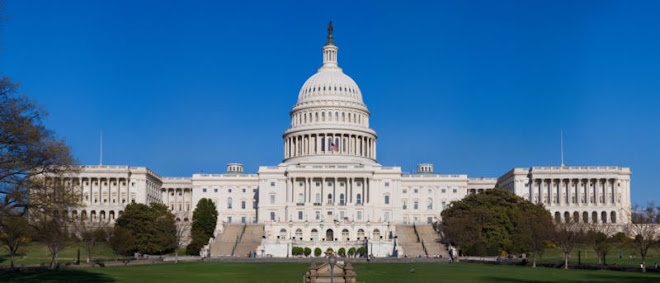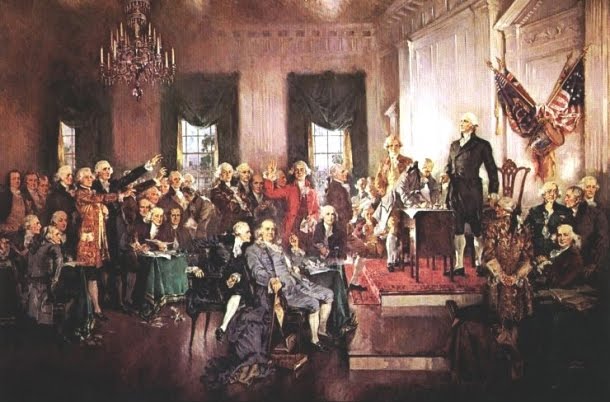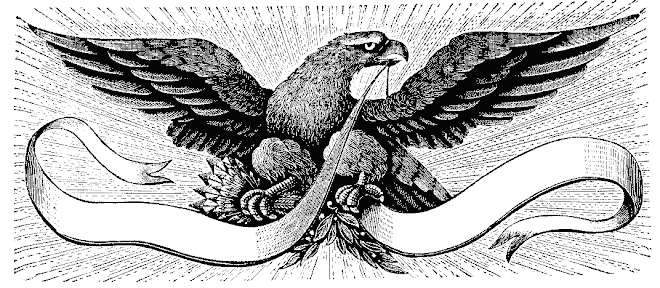From Economic Policy Journal.com and Lew Rockwell.com:
Friday, August 27, 2010The Case for Ben Bernanke as Mad Scientist
The opportunity for Federal Reserve Chairman Ben Bernanke to stargaze in the clear skys of Jackson Hole, Wyoming and to bond with a horse whisperer has done Bernanke some good.
The speech he just delivered, in the land where Dick Cheney roams, was almost John Wayne like in its frankness. Perhaps, after his visit with the horse whisperer, he considers himself a cowboy. Whatever he may think of himself ,though, clearly the label "mad scientist", with the emphasis on "mad" fits best.
Let us look at this Bernanke speech, delivered in the land where buffalo roam alongside Dick Cheney.
First, Bernanke gives himself, and his fellow government interventionists, a pat on the back for creating and sustaining an economy that continues to leave European governments on edge about their financial conditions. A concern that also holds true for many U.S. cities and states, indeed for the United States, itself. He pats himself on the back as high unemployment continues to linger,as home sales hit record lows and as business await news about what new regulations will suffocate the economy.
Some environment for a government employee to take a bow. But he did:
On the whole, when the eruption of the Panic of 2008 threatened the very foundations of the global economy, the world rose to the challenge, with a remarkable degree of international cooperation, despite very difficult conditions and compressed time frames. And when last we gathered here, there were strong indications that the sharp contraction of the global economy of late 2008 and early 2009 had ended. Most economies were growing again, and international trade was once again expanding.
Mad.
Bernanke then went on to show that he is an unabashed Keynesian:
For a sustained expansion to take hold, growth in private final demand--notably, consumer spending and business fixed investment--must ultimately take the lead.
Mad.
There was only very limited talk in Bernanke's speech of savings (He only briefly mentions business fixed investment) driving an economy by producing more goods. In Bernanke's Keynesian view it is all about consumption.
Focus a man on eating fish (consumption), instead of catching more and picking grapes and baking bread, and the man's economy will never grow.
Bernanke then admits that he was surprised that savings are increasing:
Among the most notable results to emerge from the recent revision of the U.S. national income data is that, in recent quarters, household saving has been higher than we thought--averaging near 6 percent of disposable income rather than 4 percent, as the earlier data showed.
Mad.
Doesn't Bernanke get that people throughout the land are scared out of their financial minds? That the demand for cash is soaring (Being picked up in the Fed data as additional savings) because people have no clue as to what is going to happen next in the economy? All he notices is the housing factor problem:
Household finances and attitudes also bear heavily on the housing market, which has generally remained depressed
He then admits that major corporations are also scared out of their wits and holding large amounts of cash:
Generally speaking, large firms in good financial condition can obtain credit easily and on favorable terms; moreover, many large firms are holding exceptionally large amounts of cash on their balance sheets.
He then admits that the employment situation is a disaster:
Incoming data on the labor market have remained disappointing. Private-sector employment has grown only sluggishly, the small decline in the unemployment rate is attributable more to reduced labor force participation than to job creation, and initial claims for unemployment insurance remain high.
He then confesses that the FOMC didn't expect this second leg of the downturn:
Overall, the incoming data suggest that the recovery of output and employment in the United States has slowed in recent months, to a pace somewhat weaker than most FOMC participants projected earlier this year.
So what does Ben do at this point, right after dissing his earlier forecast? He makes another one:
I expect the economy to continue to expand in the second half of this year, albeit at a relatively modest pace.Despite the weaker data seen recently, the preconditions for a pickup in growth in 2011 appear to remain in place
Mad.
He does not explain how he has adjusted his forecast methods in making this forecast. Or is he using the faulty forecast methods that failed him earlier this year?
Then he proves he is insane:
Monetary policy remains very accommodative...
Totally mad. This statement alone should get him committed.
Please understand what is going on here. The Fed chairman is saying that the Fed has been "very accommodative". This when the numbers put out by the Fed indicate no such thing. Take a look for yourself, until recent weeks, Fed growth has been extremely low. The M2 money supply measure over the last year has only grown 2%.
Now, we move on to Bernanke's new "tools", where he, first, pretty much states that one new one that they are using will be difficult to predict as far as its impact (My emphasis):
However, more recently, as the pace of economic growth has slowed somewhat, longer-term interest rates have fallen and mortgage refinancing activity has picked up. Increased refinancing has in turn led the Fed's holding of agency MBS to run off more quickly than previously anticipated. Although mortgage prepayment rates are difficult to predict, under the assumption that mortgage rates remain near current levels, we estimated that an additional $400 billion or so of MBS and agency debt currently in the Fed's portfolio could be repaid by the end of 2011...Any further weakening of the economy that resulted in lower longer-term interest rates and a still-faster pace of mortgage refinancing would likely lead in turn to an even more-rapid runoff of MBS from the Fed's balance sheet.
Bottom Line: The Fed is using a "tool" that is difficult to predict as far as its unfolding and eventual impact. Mad.
Now, we are back to Bernanke and his new "tools":
The issue at this stage is not whether we have the tools to help support economic activity and guard against disinflation. We do. As I will discuss next, the issue is instead whether, at any given juncture, the benefits of each tool, in terms of additional stimulus, outweigh the associated costs or risks of using the tool.
Keep in mind Bernanke, here, is referring to his new tool, and not the three long-used Fed monetary policy instruments: control of the Fed funds rate, control of reserve requirements and control of the discount rate. These instruments all worked fine. Why introduce new "tools" that are not clearly understood as far as their impact? Mad.
More on Bernanke's tools:
Notwithstanding the fact that the policy rate is near its zero lower bound, the Federal Reserve retains a number of tools and strategies for providing additional stimulus. I will focus here on three that have been part of recent staff analyses and discussion at FOMC meetings: (1) conducting additional purchases of longer-term securities, (2) modifying the Committee's communication, and (3) reducing the interest paid on excess reserves. I will also comment on a fourth strategy, proposed by several economists--namely, that the FOMC increase its inflation goals
The man just can't leave anything alone. Tool #1 is closest to a traditional tool as it requires the buying of Treasury securities, but instead of the Fed buying short-term securities, it calls for the purchase of long-term securities, which is a type of policy that has not been tested overtime. Why would you launch this untested program in the middle of a financial crisis? Mad.
Tool #2 is ludicrous. Does Bernanke seriously think he is going to jawbone the economy to health? Mad.
Tool #3 Here we have a completely new tool introduced by Bernanke. The paying of interest on excess reserves, which probably has a lot to do with a trillion dollars sitting on the sidelines as excess reserves. No one knows for sure why all these excess reserves are sitting there, but they weren't there before Bernanke started paying interest on reserves. Why was this tool introduced in the middle of a crisis? Mad.
Bernanke even admits there is little experience with these tools (my emphasis):
I believe that additional purchases of longer-term securities, should the FOMC choose to undertake them, would be effective in further easing financial conditions. However, the expected benefits of additional stimulus from further expanding the Fed's balance sheet would have to be weighed against potential risks and costs. One risk of further balance sheet expansion arises from the fact that, lacking much experience with this option, we do not have very precise knowledge of the quantitative effect of changes in our holdings on financial conditions... uncertainty about the quantitative effect of securities purchases increases the difficulty of calibrating and communicating policy responses
Mad.
Here is Bernake on his new tool, paying interest on excess reserves (my emphasis):
A third option for further monetary policy easing is to lower the rate of interest that the Fed pays banks on the reserves they hold with the Federal Reserve System. Inside the Fed this rate is known as the IOER rate, the "interest on excess reserves" rate. The IOER rate, currently set at 25 basis points, could be reduced to, say, 10 basis points or even to zero. On the margin, a reduction in the IOER rate would provide banks with an incentive to increase their lending to nonfinancial borrowers or to participants in short-term money markets, reducing short-term interest rates further and possibly leading to some expansion in money and credit aggregates. However, under current circumstances, the effect of reducing the IOER rate on financial conditions in isolation would likely be relatively small. The federal funds rate is currently averaging between 15 and 20 basis points and would almost certainly remain positive after the reduction in the IOER rate. Cutting the IOER rate even to zero would be unlikely therefore to reduce the federal funds rate by more than 10 to 15 basis points. The effect on longer-term rates would probably be even less, although that effect would depend in part on the signal that market participants took from the action about the likely future course of policy. Moreover, such an action could disrupt some key financial markets and institutions. Importantly for the Fed's purposes, a further reduction in very short-term interest rates could lead short-term money markets such as the federal funds market to become much less liquid, as near-zero returns might induce many participants and market-makers to exit. In normal times the Fed relies heavily on a well-functioning federal funds market to implement monetary policy, so we would want to be careful not to do permanent damage to that market.
Why would you implement such a new tool that is playing some role in attracting a trillion dollars, when to do something about it might do "permanent damage" to one of the fundamental tools of monetary policy, tested and used for decades, the Fed funds rate? Mad.
Here's Bernanke on when he might use these tools:
Each of the tools that the FOMC has available to provide further policy accommodation--including longer-term securities asset purchases, changes in communication, and reducing the IOER rate--has benefits and drawbacks, which must be appropriately balanced. Under what conditions would the FOMC make further use of these or related policy tools? At this juncture, the Committee has not agreed on specific criteria or triggers for further action...
It should be noted that the three basics were never seen in a "benefits and drawbacks" manner. This is really all about the new "tools", which really brings to the forefront and, the question: Why are all these new tools being developed and implemented, to varying degrees, in the middle of a financial crisis? Mad.
In conclusion, one has to ask: Is implementing all these new 'tools' in the middle of a financial and economic crises the work of a sane man, when former Fed chairmen managed control of the money supply with proven tools for decades? Is Bernanke a mad scientist using the United States economy as his laboratory to experiment with new "tools"?
While Bernanke stargazes and watches a horse whisperer perform, it is probably time for the rest of America to focus on the speech he just gave in Jackson Hole and realize that this is not the work of a man that can be classified as anything other than a mad scientist.
It's really time for Ben to take his helicopter and new tools and go.
Posted by Robert Wenzel at 12:38 PM
A READER ON THE STATE OF THE POLITICAL DECAY AND IDEOLOGICAL GRIDLOCK BETWEEN ONE GROUP WHO SEEK TO DESTROY THE COUNTRY, AND THOSE WHO WANT TO RESTORE IT.
The Rise and Fall of Hope and Change




Alexis de Toqueville
The American Republic will endure until the day Congress discovers that it can bribe the public with the public's money.
Alexis de Tocqueville
Alexis de Tocqueville
The United States Capitol Building

The Constitutional Convention

The Continental Congress

George Washington at Valley Forge



No comments:
Post a Comment